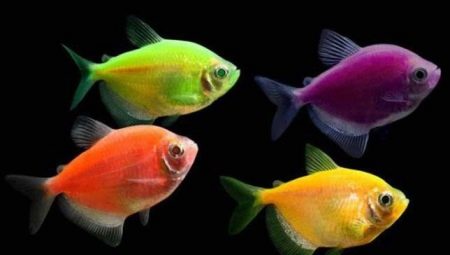In nature, thorns fishes live in reservoirs of Brazil, Paraguay, Argentina. The natural size of these interesting creatures is 6 cm, but under aquarium conditions they reach only 5 cm. The difference in thorns is the presence of a large anal fin, which can be compared to a skirt. As well as the characteristic features of this fish are the transverse stripes located closer to the head.

How to choose an aquarium?
With proper care and compliance with all conditions in the aquarium, thorns live for no more than 4 years. The volume of the aquarium is selected at the rate of 10 liters per individual. It is allowed to place 2 individuals in a 10-liter capacity, but it is customary to keep thorns in groups, since these are schooling fish. Therefore, they are best grown in an aquarium with a volume of 35 liters or more. An ideal option for a flock of fish - a glass house with a volume of 60 liters. In shape, it should be a long but shallow container with a height of about 50-60 cm.
Brisk creatures have the peculiarity of jumping out of the aquarium, so cover it with a lid.

Water requirements
Prepare settled clean water for new pets. The optimum temperature limits for a comfortable life of thorns are 22–28 °. Acidity of water is permissible within the range of 6.5–8.5 pH, and hardness should be no more than 20 dGh. There should not be a strong current in the aquarium, a moderate movement of water is sufficient. Salt in the water should not be contained.
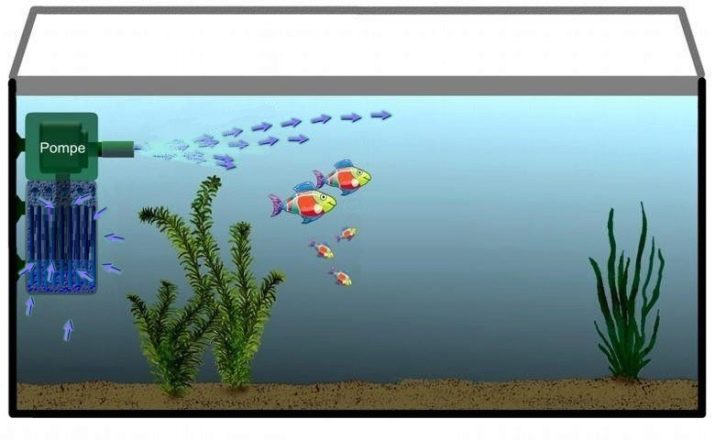
Necessary scenery
It is believed that grottoes and shelters for these fish are not necessary, so you can not spend money on a large number of different decorations.It is enough to put a cave, put a snag or a pipe, throw a couple of large stones or do with one ceramic pot. For aesthetics, buy light-colored soil, let it be river sand of a large configuration or small pebbles. Against a light background, black fish will look quite impressive.
Instead of the abundance of grottoes, it is better to use live vegetation as scenery. For example, a bright green ambulia will look spectacular in the background. The overgrowth of Elodea beautifully grows in aquariums, and this plant will also serve as an additional filter for water.
Choose plants that love the abundance of light, as thorns will need to provide good lighting. The beauty of lighted greenery underlines the interesting color of these fish.
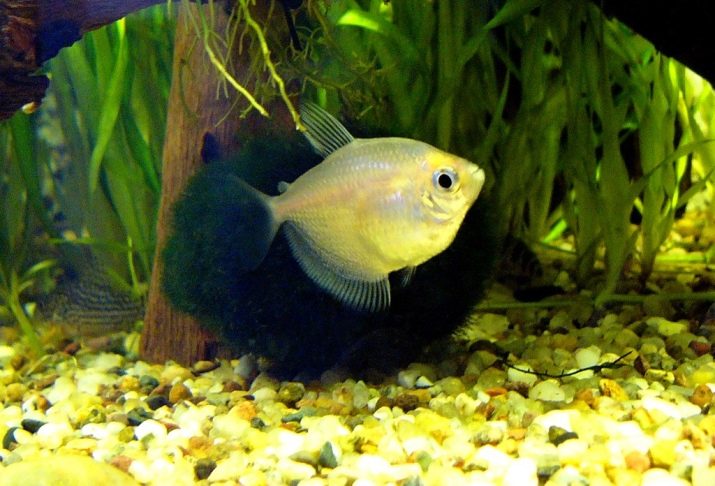
What else is needed for content?
A prerequisite for the maintenance of any aquarium inhabitants is the purchase of a filter. For thorns, equipment of small power is suitable, which does not create a strong current. And also do not forget to get a heater that will maintain the temperature at the right level in the event of a heating outage in the apartment. Comfortable conditions for fish are created by the presence of a compressor, which provides oxygen to the water.
Do not forget about lighting. Most aquariums with lids are already pre-equipped with shades or a place for their installation. For example, a tubular LED lamp will create a very beautiful effect. With natural light, it is important not to overdo it, since an excess of sunlight can trigger increased growth of aquarium plants.
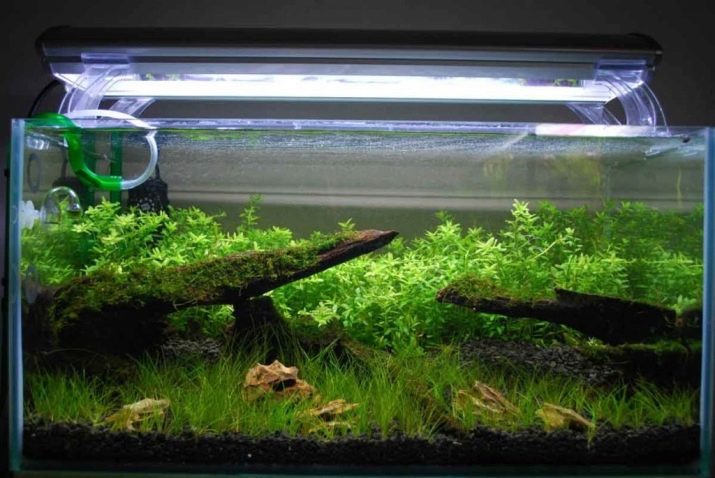
How to care?
Before buying thorns, you should know that there are several types. So, the veil variety, which is characterized by large wavy fins, is popular. Another common species is golden thorns. Its difference is the lack of stripes and a light golden color.
Particular attention should be paid to genetically modified fish, which differ in fluorescent colors. They are blue, green, yellow, red, pink, orange, purple, blue. These are luminous individuals, the color of which becomes even brighter under the influence of ultraviolet radiation.
For fluorescent species, it is recommended to organize lighting with blue, since it is under such light that they look most aesthetically pleasing.
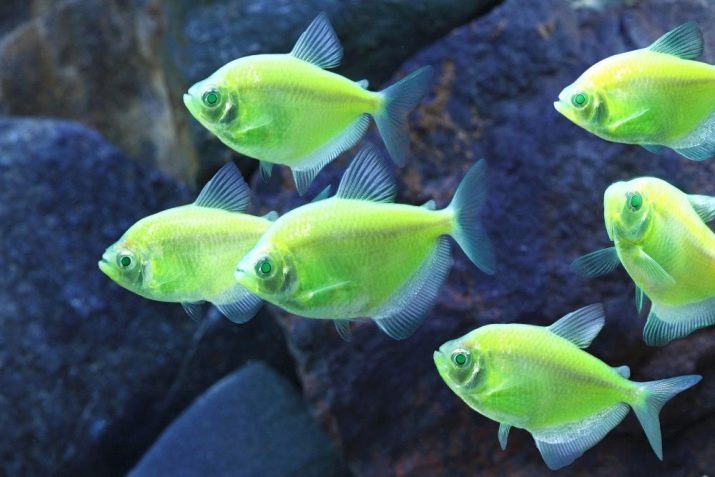
Colored fish are also stained by special injections, and although multi-colored species look very impressive in the aquarium, they have one significant minus - their lifespan is much shorter than that of individuals with an ordinary natural color.
The thorns are not picky, and even a beginner aquarist can cope with their contents.
- A couple of times a week, you need to change the water in the aquarium, or rather, replace 1/4 of its volume. Do not abuse the frequent complete replacement, as all the beneficial bacteria that form the microclimate in the aquarium are already populated in old water. These microorganisms die when the water is completely replaced, and the fish have to adapt again to the changed conditions. Pour into the aquarium only clean, settled water during the day.
- Remember to clean the filter. The frequency of the procedure depends on its power and type. If this is an internal filter, then clean it once or twice a week, the frequency of cleaning the external unit is determined by its power. Sometimes it’s enough to clean a couple of times a year.
- Provide thorns with at least 10 hours of light day. Fluorescent lamps should not be of high power, otherwise they will provoke a thermal burn on the body of aquarium inhabitants.
- Watch out for algae growth. If they are too large (for example, this is characteristic of an elodea), then thin them out, otherwise the fish will not feel comfortable swimming in such dense greenery.Rinse the plants, as particles of dirt accumulate on them, and also organize islands between them for free swimming of thorns.
- Keep in mind that when breeding fish, you should plant them in a spawning ground and immediately after throwing the eggs, put them back into the general aquarium, otherwise all the eggs will be eaten. The number of eggs per spawning is approximately 1000 pieces.
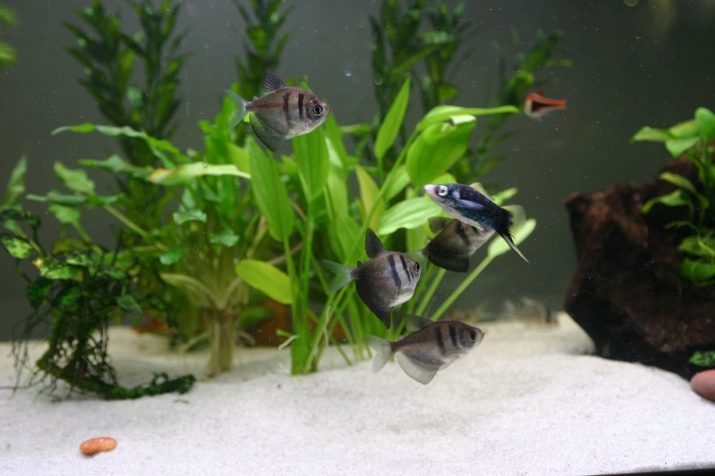
How and what to feed?
In terms of diet, thorns are unpretentious, and the main rules of feeding include compliance with the dosage. The fact is that this pOvereating is characteristic of fishes, which leads not only to deterioration, but even to the death of some individuals.
Another problem is that thorns, unlike most other aquarium fish, do not pick up fallen food from the bottom due to the peculiarities of the oral cavity, but eat it only on the surface or when it settles to the bottom.
Therefore, in order to avoid rapid contamination of the aquarium, it is important to feed the dosed pets.
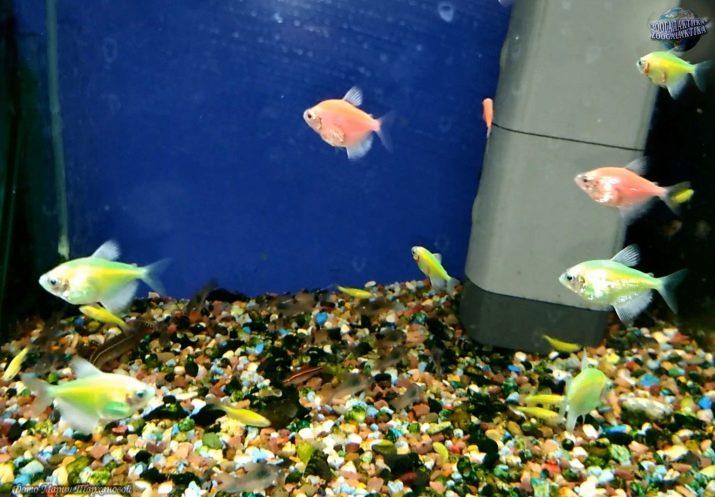
Feeding thorns is recommended in a variety of ways. The menu may include special purchased food, animal and plant components. If you feed the fish uniformly, this will lead to metabolic disturbances, reduced survival and passive reproduction. Live food can be offered both in kind and in frozen.
In nature, these fish love to feast on insects and their larvae that have fallen to the surface of the water. It is recommended to enrich the diet with vitamin supplements that strengthen the immune system of fish, ensure the development of a strong skeleton, enhance the brightness of the color.

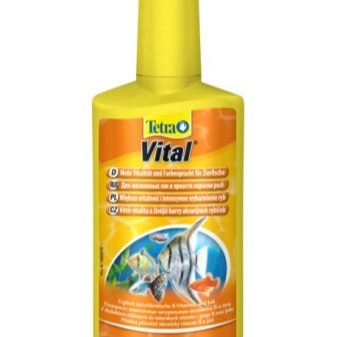
Possible problems
Difficulties in keeping aquarium fish at home may arise if different species are not respected. For example, catfish or gourami are considered good neighbors for thorns, and smaller varieties such as guppies or neons can fall prey to curious thorns. It is also not recommended to grow thorns with cichlases and astronotuses that can injure small fish. Problems arise if the throne is alone: it becomes aggressive. These are schooling fish that feel comfortable only in a group.
To avoid health problems, each new individual is placed in a junk box for 3-week quarantine. A sick fish becomes passive or, conversely, aggressive, it often floats to the surface due to oxygen starvation, does not respond to surrounding stimuli. Low acidity of water or a large amount of ammonia in it can lead to diseases.
To solve the problem, aquarists advise to increase the water temperature to 30 ° and make salt baths.

Possible infection of pets and bacterial diseases. The presence of such is indicated by the uneven coloring of the gills, the formation of mucus, filiform feces, white marks on the fins. Sick fish need to be sedimented for 25 minutes in a 2% solution of sodium chloride and repeat the manipulation after 2-3 days. Next, the "patient" is placed in a flowing aquarium.
The story about the form of fish in the next video.
